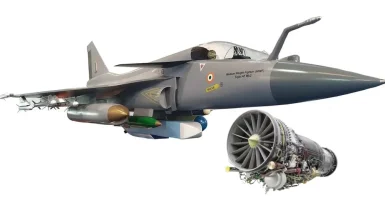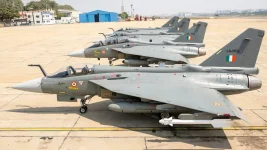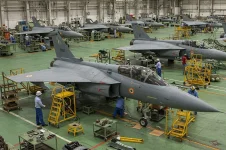- Views: 2K
- Replies: 10
The Indian Air Force (IAF) and the Defence Research and Development Organisation (DRDO) have successfully conducted a landmark exercise off the Konkan coast, testing new "manned-unmanned teaming" (MUM-T) technology in a simulated maritime strike.
During the test, a single HAL Tejas light combat aircraft, flown by an IAF pilot, worked in direct coordination with two unmanned aerial vehicles (UAVs).
The operation demonstrated the ability to share sensor data in real-time and execute precision strikes, marking a significant step toward a fully networked Indian battlespace where piloted and autonomous aircraft operate as a single team.
The Maritime Exercise
The complex exercise took place over the Arabian Sea, near the key naval hubs of Goa and Karwar. To ensure public safety and replicate realistic operational conditions, a "Notice to Mariners" (NOTMAR) was issued, creating a temporary no-sail zone that prevented civilian ships from entering the area.Following the mission's completion, all participating aircraft—both the piloted Tejas and the two UAVs—landed safely at the INS Hansa naval air station in Dabolim, Goa.
This successful recovery confirmed the reliability of the mission's integrated procedures.
How the Technology Worked
The mission began with the Tejas connecting to the two UAVs via secure data links. The UAVs acted as robotic "scouts," flying ahead to gather intelligence on simulated enemy ships using their advanced electro-optical, infrared, and radar sensors.This live data was sent directly back to the Tejas, which served as the operation's "neural hub." The aircraft used its advanced indigenous Uttam AESA (Active Electronically Scanned Array) radar to process this information instantly, fusing all data streams into a single, clear battlefield picture for the pilot.
This "sensor-to-shooter" process allowed the pilot in the Tejas to identify and designate targets for attack without having to fly dangerously close to enemy defences.
Autonomous Strikes and 'Seamless Fluidity'
A key phase of the exercise involved a dynamic role-swap. The Tejas aircraft pulled back to a supervisory position and handed over the strike mission to the UAVs.The drones then operated autonomously using DRDO's proprietary Autonomous Control System (ACS). Guided by artificial intelligence, the UAVs navigated to specific waypoints and simulated precision attacks on the virtual targets. This system allowed the drones to react to new, unexpected threats in real-time without direct human control.
While no live weapons were fired, the test successfully validated the entire "kill chain," from initial detection of a target to its final simulated destruction.
A 'Force Multiplier' for India
This MUM-T capability acts as a "force multiplier," effectively extending the combat range of the Tejas aircraft while keeping the human pilot out of immediate danger.The autonomous technology used by the drones is an advanced version of the system developed for DRDO's TAPAS-BH program, a medium-altitude, long-endurance surveillance UAV.
According to officials, the exercise was a complete success.
Simulations show this technology can increase the speed of operations by 40% and improve mission survivability. This is achieved through "distributed lethality," a concept where the loss of a single unmanned asset does not compromise the entire mission.
This advanced test was integrated with other major military drills, including Exercise Konkan 2025 (a naval exercise with the United Kingdom) and the tri-service Trishul wargame.
The collaboration is strongly supported by military leaders, including Air Chief Marshal A.P. Singh, who has stated that network-centric capabilities are a top priority, aligning with India's national goal of 'Aatmanirbhar Bharat' (self-reliant India) in defence.



